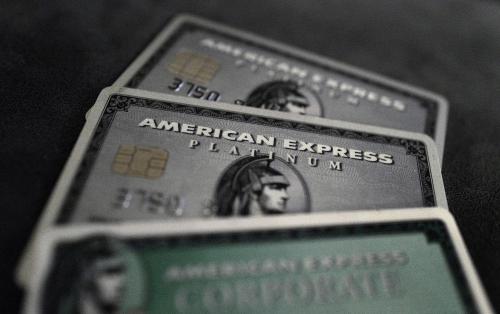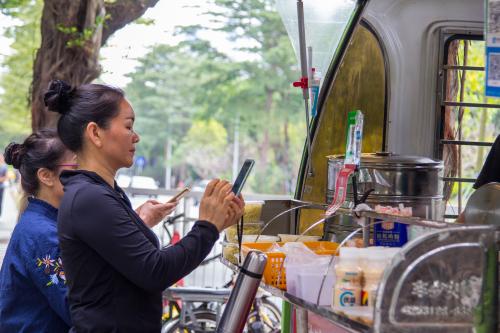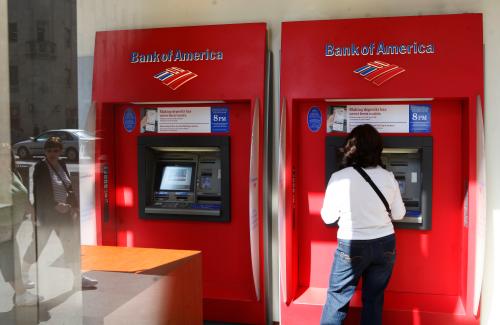Read Aaron Klein’s complete testimony to the U.S. House Financial Services Committee Task Force on Financial Technology here.
The U.S. House Financial Services Committee Task Force on Financial Technology held a hearing on Thursday, January 30, entitled: “Is Cash Still King? Reviewing the Rise of Mobile Payments.” My answer to that provocative question is: Yes, cash is still king. However, the public discussion about who uses cash, how quickly a cashless future is coming, and how advanced America is in implementing the payment system of the future is often misguided and frequently wrong. For example, the narrative that millennials never carry cash is wrong: the youngest (under 30) and the oldest (over 65) are both more likely to use cash than those in the middle. Cash is the most frequent means of payment for transactions under $25 and is more commonly used in rural American and by racial minorities. Rather than a cashless society being around the corner, public demand for cash remains strong and low dollar notes in circulation (ones, fives, tens, twenties) have grown steadily this decade.
What does this mean for the typical American? That’s complicated. Our current payment system has become a reverse Robin Hood. Think of the payment system as a ladder, highly correlated to wealth. If you are toward the bottom rungs, you are more likely to use cash or pre-paid cards. In the middle lie debit cards. At the top are high reward credit cards. Next to the ladder is a conveyor belt. It takes money from those at the bottom and quietly moves it up to those at the top, with some syphoned off in the form of fees going mostly to banks and some payment service providers. One way it does this is by charging everyone the same price at the register and then providing cash-back only to the wealthiest who have qualified for certain credit cards. Another way the belt works is by offering debit cards for free to everyone, but then charging people who temporarily run out large fees; the typical overdraft fee is $35. These are fees almost exclusively borne by those living paycheck to paycheck. The economics of the current payment system help drive the substantial demand for cash
While cash is still king, there is no denying that an increasingly large number of goods and services are moving onto digital platforms.
While cash is still king, there is no denying that an increasingly large number of goods and services are moving onto digital platforms that do not accept cash. As online and mobile apps transform the economy, consumers who are dependent on cash or prepaid cards are increasingly left behind.
Prior concerns about a digital divide were incorrectly centered around questions of internet access. Smart phones have successfully bridged much of the divide in terms of access.[1] However, access alone is insufficient. Without a means to purchase the goods or services being offered, the benefits of the app-, gig-, or online-economy fail to convey and the ability to access digital payment systems are creating a practical digital divide.
The ramifications of this divide are greater than fully appreciated. Growth in online and app-based goods and services significantly benefits consumers with lower costs and greater convenience for everything from ordering groceries to hailing a taxi. However, people cannot access those savings without access to low cost or free digital payment mechanisms. This is clearly a problem for the one in fifteen households in America that are un-banked. Without access to a bank account, debit or credit card, there is often no way to make a digital payment.
The problem is also evident for those who are under-banked (roughly one in six Americans) and those who live paycheck to paycheck. Regarding this latter group, some estimates characterize almost half of Americans as living paycheck to paycheck. The economics of many app-based digital services simply assume that the user will always have funds to cover recurring or periodic expenses and expect the ability to tap into that consumer’s bank account to receive funds. Given the high cost of overdraft, income volatility, and payment delays, the result for consumers living on the razor’s edge can be a far more expensive.
The impact of this payments divide extends beyond financial services. Consider the potential health benefits available to a series of new transportation applications, such as bike sharing or healthy food delivery through food- or farm-shares. These technologies hold the promise to reduce costs of some of the largest budget items a family face: food and transportation. They offer better, cheaper ways to meet existing needs that in turn provide significant opportunities to live a healthier lifestyle – eventually reducing societal healthcare costs and improving quality of life. However, neither allow for cash. Both require access to digital payment. One may have a pay as you go system, the other a recurring regular charge. Each may be cheaper than the alternative (grocery store or taxi/public transportation), but those cost savings are built around the assumption of no payment frictions. Once a single overdraft fee (typically $35) is charged, the entire cost savings disappear, and the application is now a money loser for the user.
For lower income consumers, in particular (importantly not just the un-banked, but the underbanked as well), to truly benefit from the digital economy, cheap and reliable digital payments are a necessity. This is a significant and growing problem. It may require government policies that provide resources and set stronger rules mandating different options and availability for Americans of all financial levels. It is a corollary to the policy requirement that cash continue to be accepted, the digital access to payments will also need to be facilitated.
My complete testimony before the House’s Task Force on Financial Technology can be found here. The growth of financial technology, particularly cashless digital wallets, is an opportunity to fix these problems. More research and strategic thinking are necessary to ensure universal access to future payment systems. The new digital divide is increasingly not about being able to get on-line, it is about being able to pay electronically.






Commentary
TestimonyIs cash still king? Reviewing the rise of mobile payments
January 30, 2020